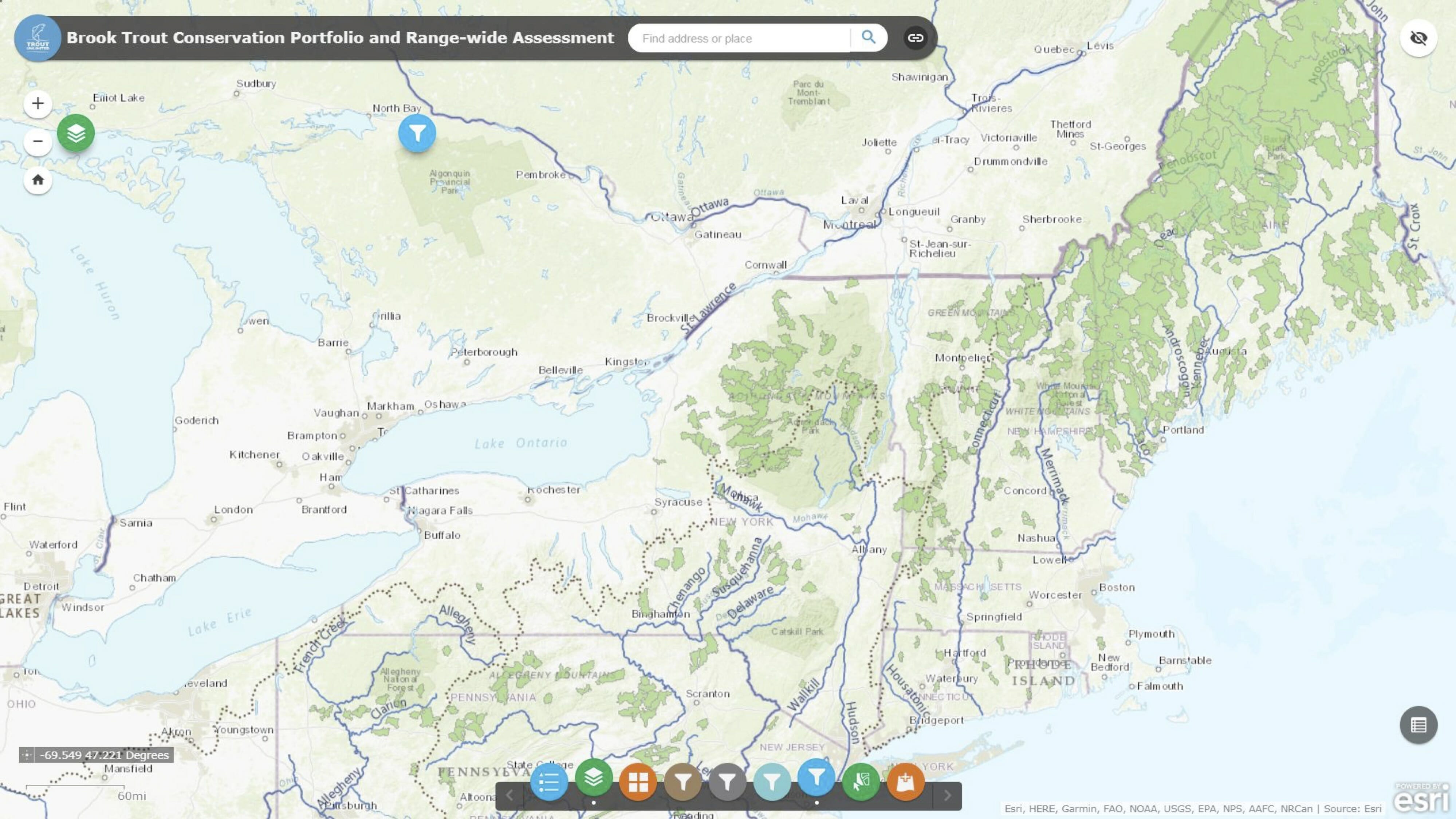By Keith Curley
Brook trout are often looked at through the lens of decline, and with good reason – brook trout have been lost from many of their historical habitats. The Northeast, however, continues to be blessed with an abundance of brook trout habitat. According to TU’s Conservation Portfolio, Range-wide Assessment, and Focal Area assessment report for brook trout across their eastern range, the Northeast is home to two-thirds of total brook trout habitat area, 100% of the sea-run life history, and three quarters of resident highly productive brook trout populations. One-third of Maine’s brook trout habitat patches are considered to be resilient strongholds.
TU’s Conservation Portfolio analysis provides a series of strategies to conserve these tremendous brook trout resources. The Conservation Portfolio is rooted in the idea that diversity brings stability. By conserving brook trout across a variety of populations and habitats, we can make them more resilient to environmental disturbance and more likely to persist and succeed over time. The three core tenets of the Portfolio are Resiliency, Redundancy, and Representation.
In short, this means that we want to conserve: large, interconnected brook trout habitat patches (Resilient); numerous brook trout patches in a given landscape so that if some are lost it does not jeopardize the species (Redundant); and diverse life histories including lake and pond populations, large river migratory populations, and sea-run populations (Representation).
In the Northeast there are 401 resilient brook trout habitat patches. The conservation strategies for these resilient patches are to protect the ones with intact habitat, and to protect and enhance the strongholds that could use some improvement.
For example, TU worked with the Trust for Public Land to protect the Cold Stream Forest, an 8,159-acre parcel containing 14 miles of Cold Stream, an excellent brook trout fishery and a critical spawning tributary to the Kennebec River, and 7 wild brook trout ponds. Maine has an abundance of resilient brook trout habitat, but it would be difficult to find a piece of land with greater conservation value for securing brook trout strongholds.
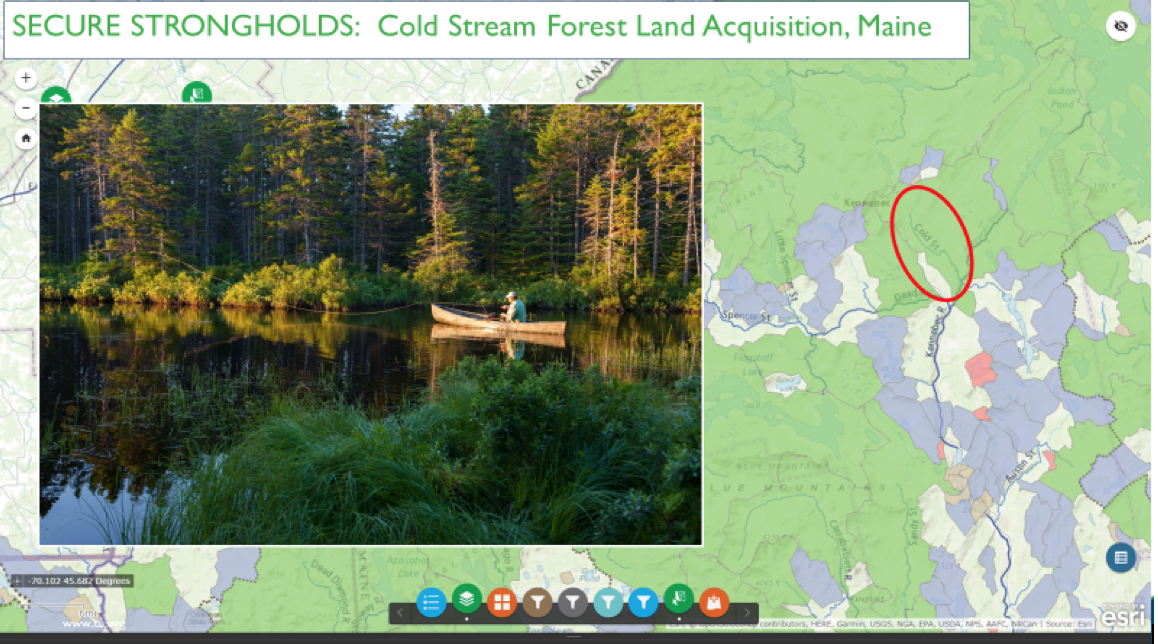
Where resilient brook trout patches have habitat impairments, the conservation strategy is to enhance the stronghold. In Vermont, TU and the Vermont Fish & Wildlife Department have collaborated for several years in the Nulhegan River basin, a tributary to the Upper Connecticut River and a resilient brook trout patch. By completing 13 miles of large wood addition, with 4 more miles planned for 2018, TU and VTFW have made dramatic improvements to the Nulhegan’s brook trout fisheries. Six years of electro-fishing studies have shown an average increase in brook trout biomass of 150%, and nearly quadruple the number of brook trout over 6 inches.
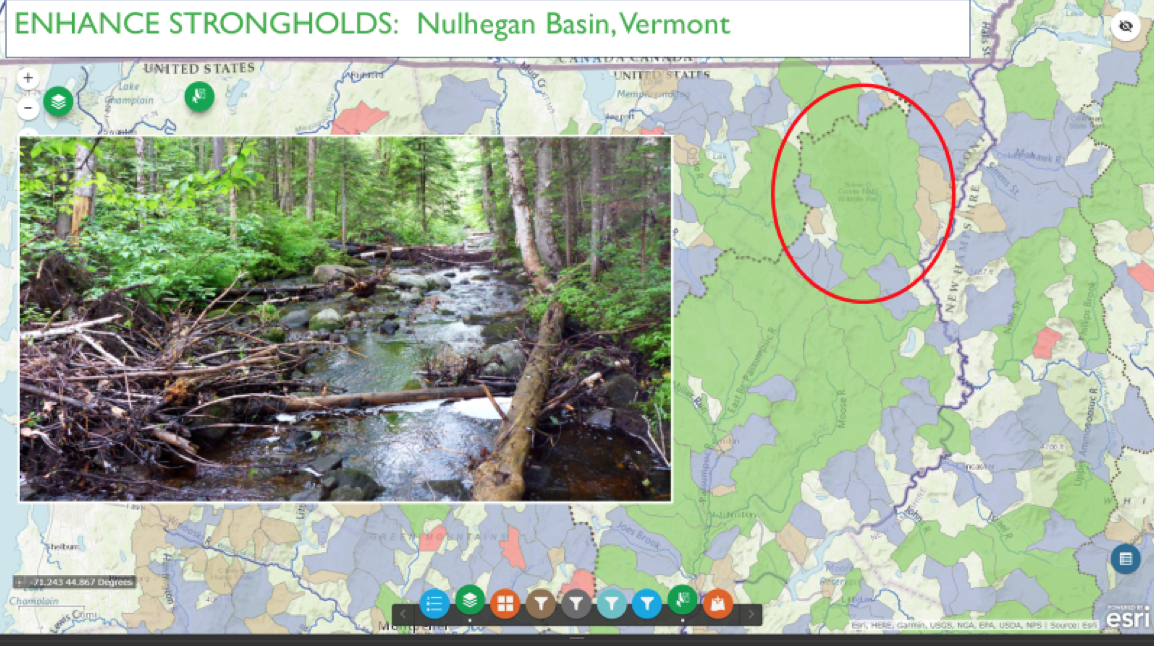
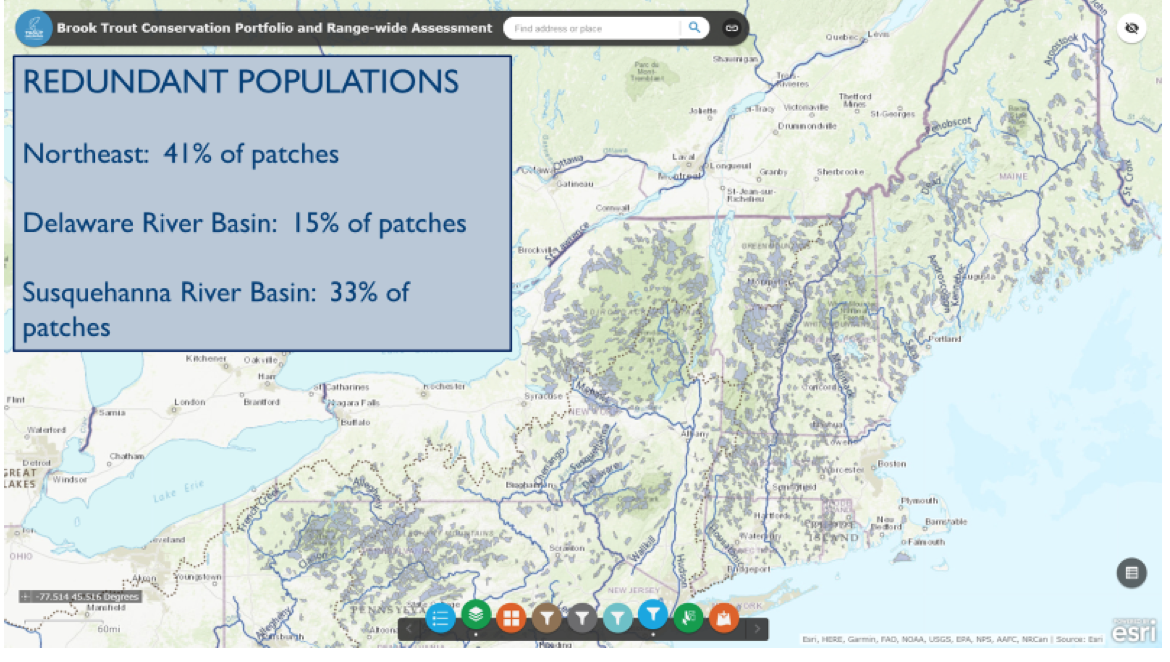
Redundant populations account for 41% of the Northeast’s brook trout patches. These patches are not as large as those classified as resilient, and may suffer from more habitat impairments, but are still considered to be persistent.
Conservation strategies for redundant brook trout populations are to secure and restore persistent populations and habitats. Ideally, through restoration and reconnection of fragmented habitats, redundant habitat patches can become resilient.
An example can be found in New Hampshire, where the Basil Woods Chapter has worked with the New Hampshire Fish & Game Department to survey all the culverts in the watershed, identifying the causes of habitat fragmentation. TU completed hydraulic modeling and brought the information back to the local community to begin planning habitat reconnection projects. The Basil Woods Chapter was so successful in building community awareness of and support for the Warner River watershed and its fisheries that the Warner River was recently approved by the New Hampshire State Legislature for inclusion in the state’s River Management and Protection Program.
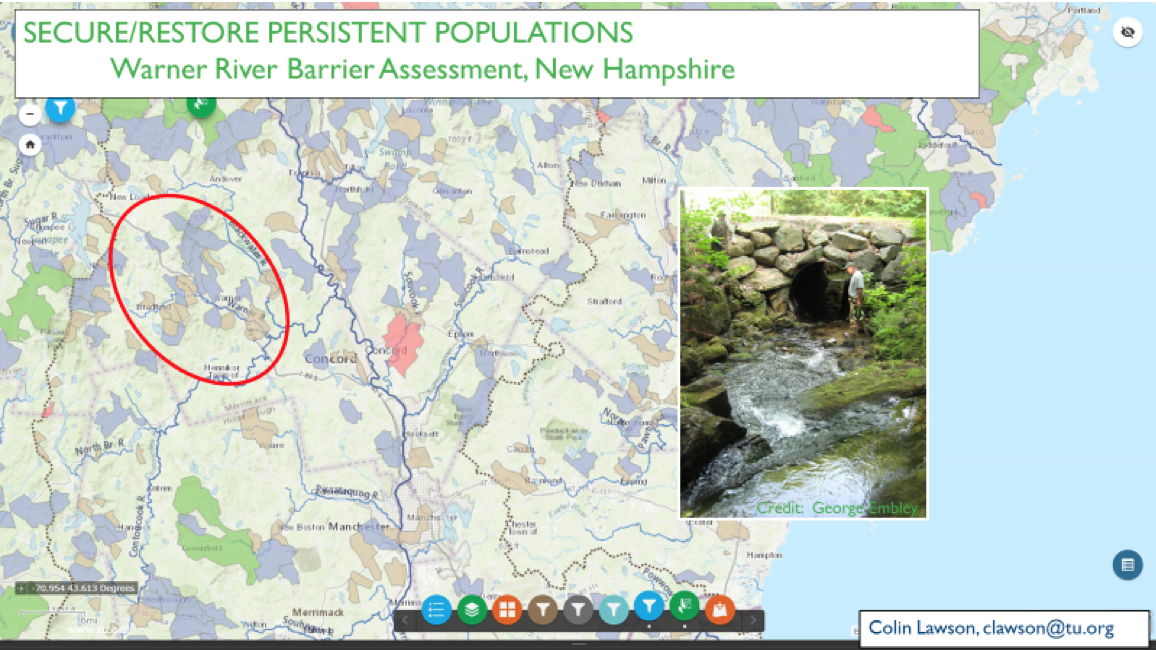
Representation for brook trout in the Northeast takes the form of lake and pond populations, large river migratory populations, and sea-run populations.
In Vermont, where there are only eight fishable pond populations of wild brook trout, TU and VTFW have worked to improve the major tributary to West Mountain Pond in order to secure that population.
In contrast, Maine has so many brook trout ponds that it didn’t know where they all were. Since 2011, volunteers from TU and partner organizations surveyed (that is, fished) more than 400 ponds, reporting back to Maine Dept. of Inland Fisheries and Wildlife on what they found so that the state could come back and complete formal surveys to document wild brook trout populations and put them in the queue for protection as Heritage Waters.
We recently brought the same approach to the coast, where a range-wide analysis of 457 coastal streams found that 201 were of “unknown status” for sea-run or “salter” brook trout. TU has since surveyed 155 streams, finding brook trout in 74 of them. These findings have included some robust populations, and have built momentum for restoration projects to improve habitat connectivity along the coast.
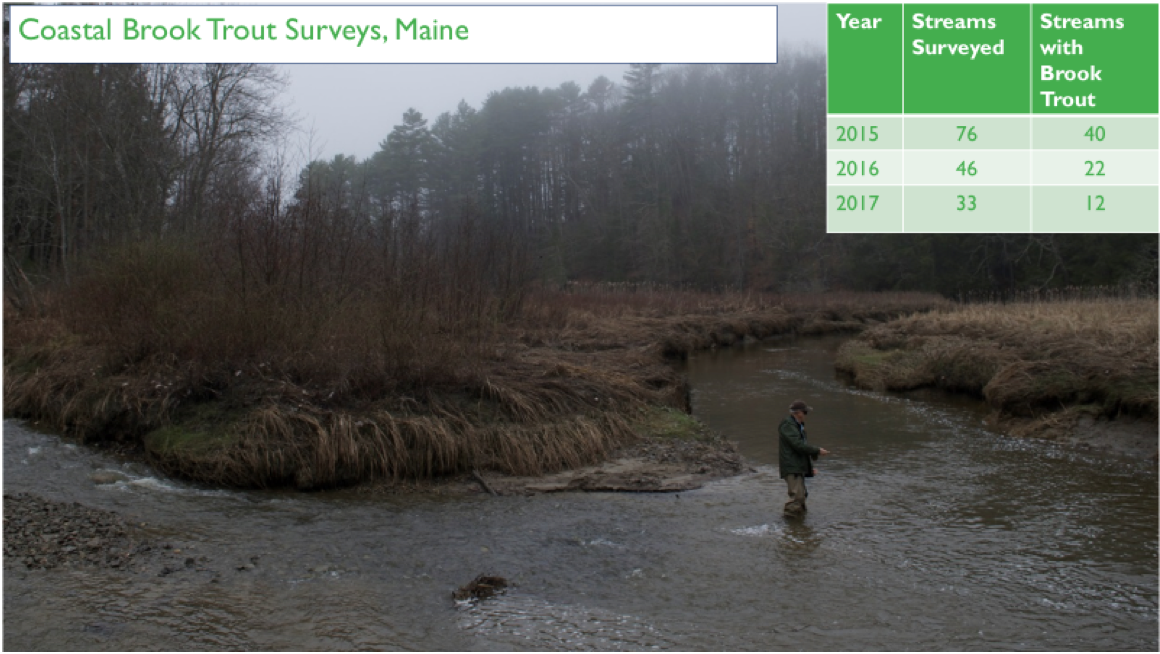
Finally, in some of the places where brook trout have been lost we may have a chance to get them back. TU and the New Jersey Department of Environmental Protection are planning the state’s first ever brook trout reintroductions in waters that have been monitored and have shown the right water temperature and chemistry to support brook trout. The hope is that once these reintroductions take hold, we can identify additional streams that are suitable for reintroducing brook trout.
The Conservation Portfolio is a valuable tool for understanding brook trout populations and planning conservation strategies. Interactive web maps can be found at the Brook Trout Portfolio page, and the Brook Trout Atlas page on tu.org.
Keith Curley is Trout Unlimited’s vice president of Eastern Conservation.



